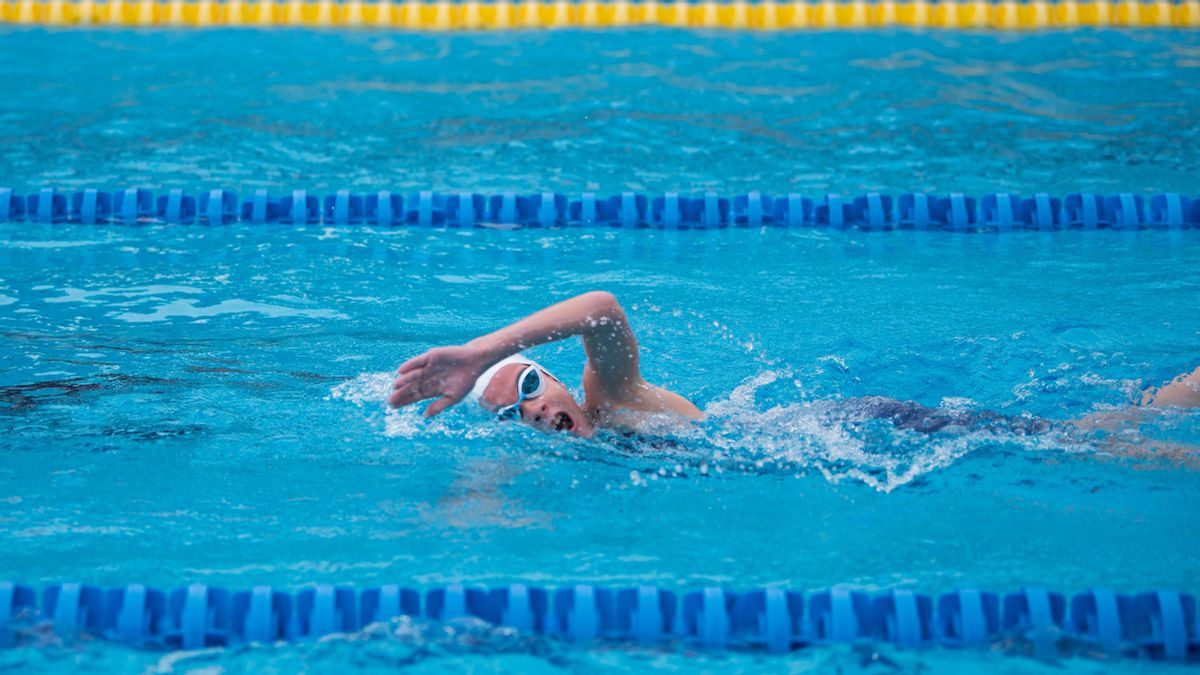YOGYAKARTA Applying the correct breathing technique while swimming not only makes you stay alive when floating just below the surface of the water, but also improves your aerobic performance as a swimmer.
The amount of air in your lungs is as important as the breaststroke or dolphin kick (one of the leg movements in swimming) for the whole technique of your swimming.
Practice a good breathing pattern and take full advantage of the lung capacity to help you swim faster and more effectively. This applies to Olympic triathlon athletes who are used to swimming in open waters as well as beginner swimmers who plunge into their deepest swimming pools.
Therefore, the correct breathing technique while swimming must be controlled so that the body can still get energy and be able to swim as long as possible.
Quoted by VOI from the Fromswim website, Sunday, December 18, 2022, here are the correct breathing techniques while swimming.
When taking a breath, tilt your head slightly to the side. When one of the hands is raised upwards, the head is automatically also tilted. In that situation, concentrate on taking a breath by tilting your head. You should look side to the surface of the water rather than raise your head and look up.
When you breathe, you have to do it quickly. Don't hold your breath while swimming, but exhale completely under the water. This makes it easier to breathe fast in the next breath than try to exhale and exhale when your head comes out of the water.
When tilting your head to take a breath, your arm on the opposite side must hold in front of you. This helps keep your body upright and supported, making it easier to breathe. For example, if you breathe to the right, your left arm should be stretched.
When taking a breath, don't lift your head up in the water because it can interfere with concentration.
To take a breath, position one hand in front of the front and the other hand behind with an angle of about 45 degrees. Turn your head in the side and take as much breath as possible.
The breathing to the right and left sides is called bilateral breathing. Bilateral breathing benefits include a more balanced stroke, helping you roll from side to side, and giving you more time to exhale before your next breath.
You can also change the situation and breathe only on the one hand. If you choose to do this, make sure you also practice bilateral breathing to maintain your hitting balance.
The technique of exhaling in the swimming is different from when doing daily activities. exhale through the nose and mouth. That way, the amount of water that may enter the nose and lungs is less.
That's information about the correct breathing technique while swimming. May it be useful!
The English, Chinese, Japanese, Arabic, and French versions are automatically generated by the AI. So there may still be inaccuracies in translating, please always see Indonesian as our main language. (system supported by DigitalSiber.id)










